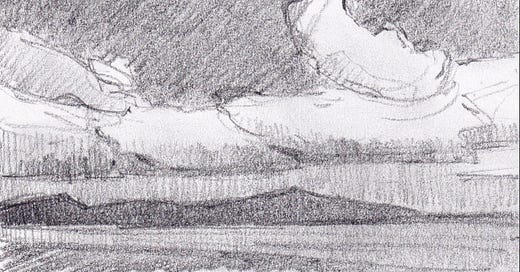Primer for Plein Air: Part 6 / Making a Proper Value Sketch
Making a preliminary value sketch is waste of time, right? Wrong.
Many of us skip making a value sketch. We're all too eager to get right to the fun part, the painting. But in doing so, we're missing out on a practice that will bring the painting closer to our initial vision. I've found that if I make a value sketch first, I usually end up with a more satisfying result. Here's why.
First, making a value sketch helps me analyze the scene, simplifying it into a few simple shapes of a few values. This creates a map for the placement of shapes. Sure, I could try doing this right on the canvas, but most likely I'll end up having to rework the underpainting until I get the shapes and values right. The result is usually either a palimpsest of overlaid and confused intentions—or mud. I can't tell you how many times I've had to wipe the whole canvas.
Keep reading with a 7-day free trial
Subscribe to Painting to See to keep reading this post and get 7 days of free access to the full post archives.




